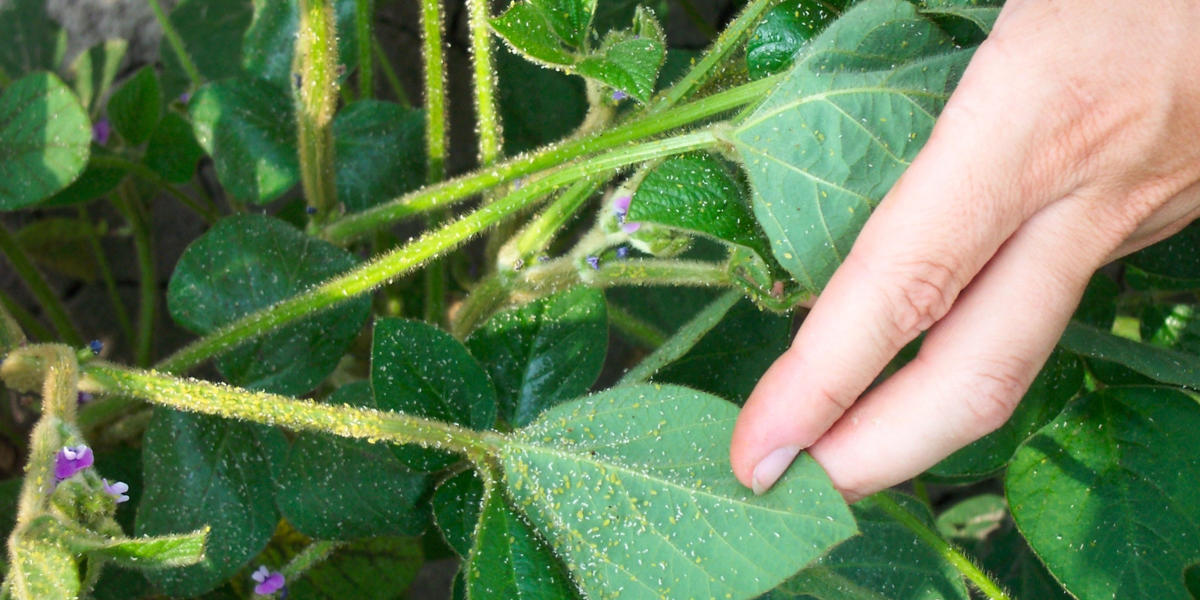
Soybean aphid infestation
Image credit: Christina DiFonzo, Michigan State University, Bugwood.org, CC BY 3.0 US DEED. Cropped for use.
Background
Soybean aphid is the most significant arthropod pest affecting soybeans in North America. Soybean is the largest crop area in Minnesota, with the state’s production third in the nation. Aphids can devastate crops by reducing plant height, pod number, and overall yield. Despite this, there has been a lack of systematic effort to collect, analyze, and report on estimates of the yield losses caused by this pest in farmers' fields. Without this type of comprehensive information, it is difficult to assess risks and determine how to invest limited resources in the decades ahead.
Research questions
- What is the geographical extent, frequency over time, and severity of damage of soybean aphid?
- What are the costs and benefits of developing new or improved pest management strategies?
Practical implications
Researchers aim to develop a flexible, evidence-based, bio-economic evaluation workflow that can estimate the long-term potential damage and distributions of soybean aphid. They intend for this information to be useful to government and state agencies, crop commodity groups, and other researchers to help determine how to use management resources effectively.
Outcomes
This project began in January 2024 and is in progress for the next several years. Please check back at a later time for updates.
To stay connected, sign up for the MITPPC newsletter and follow us on Facebook and LinkedIn.
News and media
- GEMS spearheads innovative approach to assessing soybean aphid risk (GEMS Informatics, 2024)